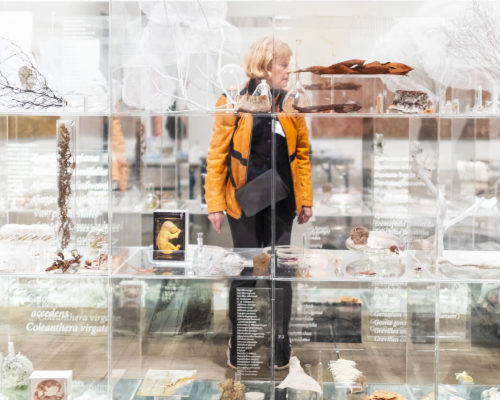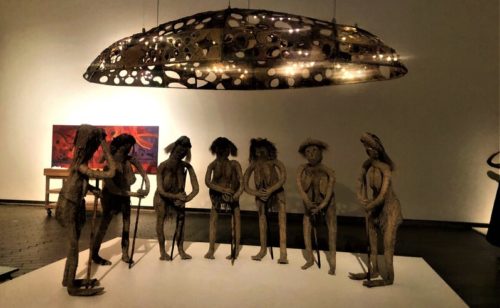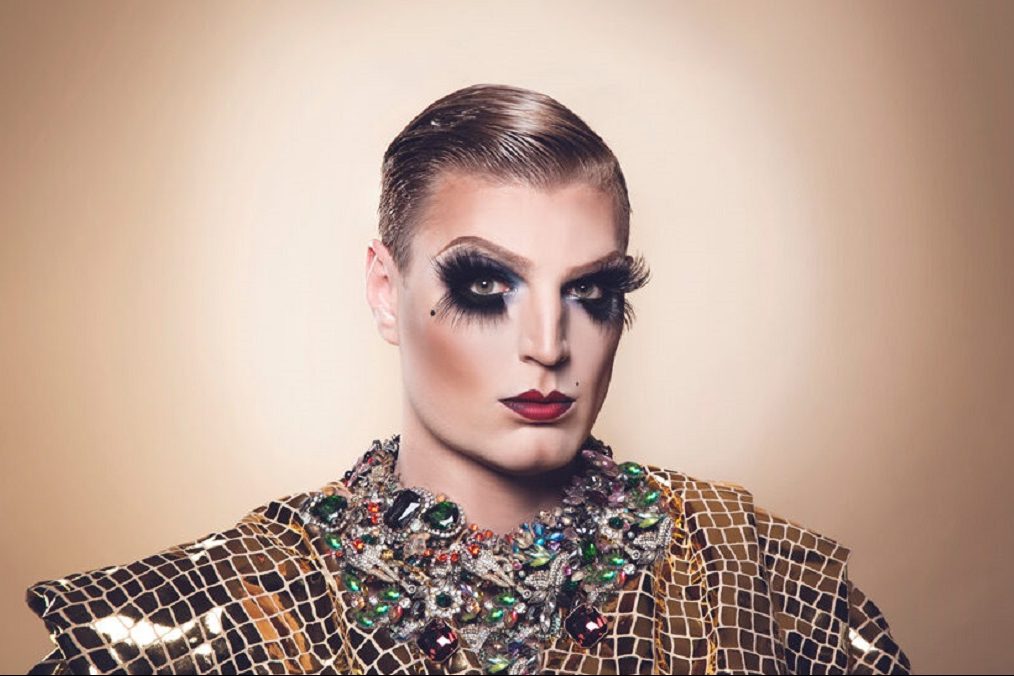
IN 1939 “The Australian Women’s Weekly” ran a story about the noted portraitist Nora Heysen headed, “Girl Painter Who Won Art Prize is Also Good Cook”.
That’s the kind of thing that really irks curators, Elspeth Pitt and Deborah Hart, now deep into the eight-week installation of the NGA’s massive summer exhibition, “Know My Name: Australian Women Artists 1900 to Now”.
Heysen, whose work appears among more than 350 works of art including new commissions, performances and works, was in 1938 the first Australian woman to win the Archibald Prize and in 1943 she became the first woman to be appointed as an Australian war artist, but as daughter of the famous landscape painter, Hans Heysen, she shared with other artists represented in “Know My Name”, the misfortune of living in the shadow of a man.

Not any more, if Hart and Pitt have anything to do with it. For the coming show, likely to be a serious perception-changer, Hart says, “certainly the most complex and biggest exhibition of art by women ever seen in this country”, one that has demanded of them “a great big burst of energy”.
It will also be one of the most beautiful, extending from the top entrance of the gallery backwards, with floor-to-ceiling presentations that reveal the beauty of Colin Madigan’s building.
But getting the exhibition ready for a major showing is just part of what Hart calls a continuum, a series of ongoing initiatives by the gallery to upend the assumption that modern and contemporary Australian art is a male-dominated narrative.
According to Hart, they pitched the idea of the exhibition to NGA director Nick Mitzevich back in February 2019 as they were all looking at a big slide of portraits by women of women.
Naturally Mitzevich knew who the artists were, but he got wondering whether other people did too, and from that time the practical idea took off – how to make the women’s names as well known as those of male artists.
The good news is that history has been taking care of that, as the landscapes of the famous Dead White Males recede into the background of the public imagination.
At least in Australia, Stella Bowen’s reputation far exceeds that of her polyamorous partner, writer Ford Madox Ford. The show doesn’t cover her war art but does have beautiful nudes by Bowen which the curators describe as “a bit racy”.
Heysen’s ravishing portraits are nowadays seen as widely as her father’s gum trees, despite what Hart calls “the extraordinary burden of having a famous father”.

In her lifetime, post-Impressionist Ethel Carrick’s reputation was eclipsed by her husband, Emanuel Phillips Fox, but critics today consider her work more adventurous than his and her brilliant colourism has an international name.
Art reflects a broader history, so it was easy, Pitt says, to identify key works of art and key moments in time when women brought about change.
“The show will say something about how society functions,” she says.
“The way the movement towards equal pay for equal work matched the movement of women who said, ‘we would like our stories to be recognised’.”
One unexpected element emerging in the show was the way in Australia, unlike other countries, it was largely women who pioneered modernism and abstraction.
“Also a move into colour, early in the century, with Ethel Carrick at the forefront,” Hart cuts in.

One thing that really excites both curators is the new commissioning undertaken for the show.
First and foremost is an installation by the Tjanpi Desert Weavers showing an episode from the Seven Sisters narrative where seven life-size figures underneath a giant canopy are overseen by a peeping Tom. The artists from the Ngaanyatjarra Pitjantjatjara Yankunytjatjara (NPY) lands were unable to fly to Canberra, so they coordinated the installation by Skype.

The curators reflect that the Aboriginal art of Australia has been successfully led by women artists, including giants like Queenie McKenzie and Emily Kame Kngwarreye, but also in newer media like Tracey Moffatt’s first major series of photographs, “Something More”, 1989.
The leap into diverse media, they say can be seen in the woven nests Fiona Hall has made out of the US currency, and in the exquisitely fragile installation “Requiem” by Janet Laurence and the “Tombstone Garden” by Kathy Temin, “remembering people with tenderness and gentleness”, Hart says.

Appealing to more youthful viewers are painterly photographic portraits by Jan Nelson in the series “Walking in Tall Grass” which capture the way teen girls use fashion to express individuality.
In this exhibition, there is a visible presence of Canberra artists like GW Bot, eX De Medici, Marie Hagerty, Alison Alder, Brenda L Croft and Vivienne Binns, who has gifted her installation “Tower of Babel” to the gallery. A whole wall of posters refers to Canberra’s art history.
Alder is also one of the authors of the mighty publication accompanying the show, one of the biggest the gallery has ever produced – almost 500 pages with 114 female authors from Australia reflecting on 159 different women artists.
“Know My Name: Australian Women Artists 1900 to Now”, NGA, November 14-July 4, 2021, free.
Who can be trusted?
In a world of spin and confusion, there’s never been a more important time to support independent journalism in Canberra.
If you trust our work online and want to enforce the power of independent voices, I invite you to make a small contribution.
Every dollar of support is invested back into our journalism to help keep citynews.com.au strong and free.
Thank you,
Ian Meikle, editor




Leave a Reply